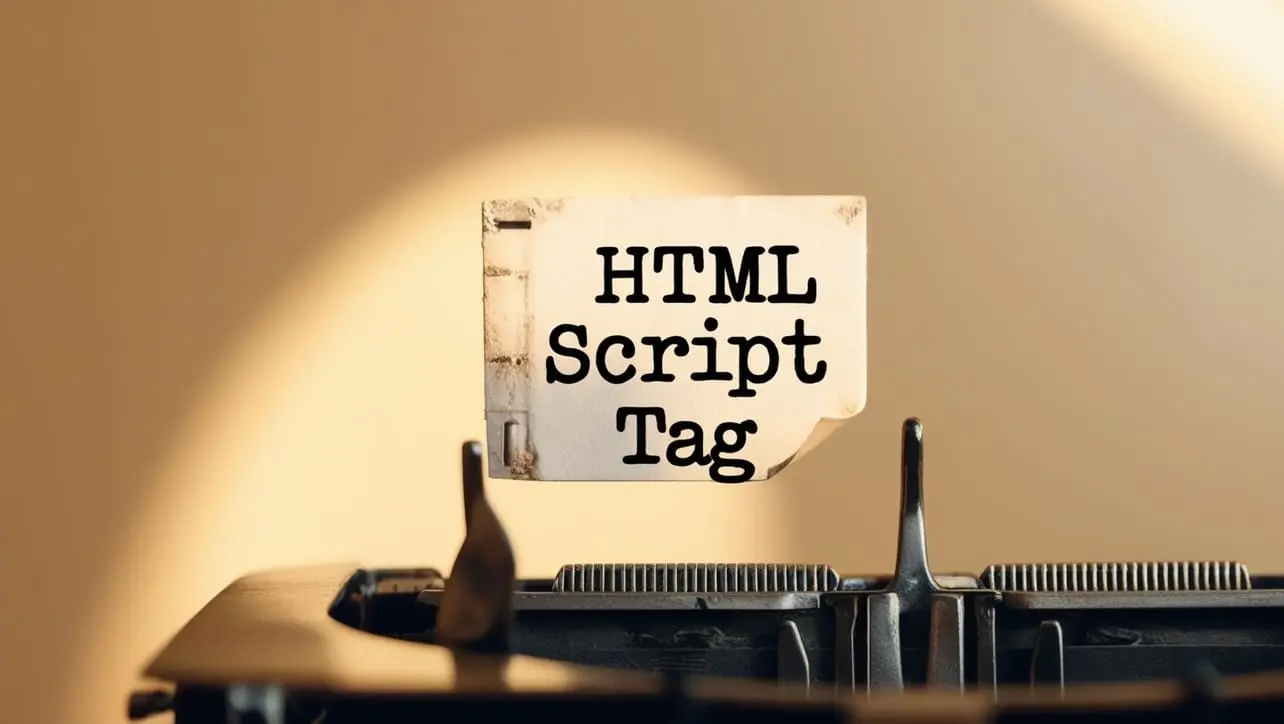
HTML Topics
- HTML Intro
- HTML Basic
- HTML Editors
- HTML CSS
- HTML Tags
- <!--...-->
- <!DOCTYPE>
- <a>
- <abbr>
- <address>
- <area>
- <article>
- <aside>
- <audio>
- <b>
- <base>
- <bdi>
- <bdo>
- <bgsound>
- <blink>
- <blockquote>
- <body>
- <br>
- <button>
- <canvas>
- <caption>
- <cite>
- <code>
- <col>
- <colgroup>
- <data>
- <datalist>
- <dd>
- <del>
- <details>
- <dfn>
- <dialog>
- <div>
- <dl>
- <dt>
- <em>
- <embed>
- <fieldset>
- <figcaption>
- <figure>
- <footer>
- <form>
- <h1> to <h6>
- <head>
- <header>
- <hgroup>
- <hr>
- <html>
- <i>
- <iframe>
- <img>
- <input>
- <ins>
- <kbd>
- <label>
- <legend>
- <li>
- <link>
- <main>
- <map>
- <mark>
- <menu>
- <meta>
- <meter>
- <nav>
- <noscript>
- <object>
- <ol>
- <optgroup>
- <option>
- <output>
- <p>
- <param>
- <picture>
- <pre>
- <progress>
- <q>
- <rp>
- <rt>
- <ruby>
- <s>
- <samp>
- <script>
- <search>
- <section>
- <select>
- <small>
- <source>
- <span>
- <strong>
- <style>
- <sub>
- <summary>
- <sup>
- <svg>
- <table>
- <tbody>
- <td>
- <template>
- <textarea>
- <tfoot>
- <th>
- <thead>
- <time>
- <title>
- <tr>
- <track>
- <u>
- <ul>
- <var>
- <video>
- <wbr>
- HTML Deprecated Tags
- HTML Events
- HTML Event Attributes
- HTML Global Attributes
- HTML Attributes
- HTML Comments
- HTML Entity
- HTML Head
- HTML Form
- HTML IndexedDB
- HTML Drag & Drop
- HTML Geolocation
- HTML Canvas
- HTML Status Code
- HTML Language Code
- HTML Country Code
- HTML Charset
- MIME Types
HTML script Tag

Photo Credit to CodeToFun
🙋 Introduction
In the dynamic world of web development, the <script> tag is a key player, facilitating the inclusion of JavaScript code within HTML documents.
This comprehensive guide will navigate you through the intricacies of the HTML <script> tag.
🤔 What is <script> Tag?
The <script> tag is an essential HTML element used to embed or reference JavaScript code within an HTML document. It enables developers to enhance the functionality and interactivity of web pages.
💡 Syntax
To incorporate JavaScript code into your HTML document, use the <script> tag with the type attribute set to "text/javascript" (though in modern HTML, this attribute is often omitted as JavaScript is the default scripting language).
<script type="text/javascript">
// Your JavaScript code here
function greetUser() {
alert("Hello, User!");
}
</script>🧰 Attributes
The <script> tag supports various attributes, such as async and defer, providing control over how the script is executed. Understanding these attributes is crucial for optimizing script loading and execution.
<script type="text/javascript" defer>
// Your deferred JavaScript code here
</script>📍 Placement
The placement of the <script> tag within the HTML document can impact page loading and rendering. Consider placing scripts in the <head> or at the end of the <body> to optimize performance.
<head>
<script type="text/javascript" src="your-script.js"></script>
</head>
<body>
<!-- Your HTML content -->
<script type="text/javascript">
// Inline JavaScript code
</script>
</body>📚 Common Use Cases
Inline Script:
The
<script>tag allows you to include inline JavaScript directly within your HTML document.inline-script.htmlCopied<script type="text/javascript"> function displayMessage() { alert("This is an inline script!"); } </script>External Script:
For more extensive scripts or better code organization, use the src attribute to link to an external JavaScript file.
external-script.htmlCopied<script type="text/javascript" src="your-external-script.js"></script>
🖥️ Browser Support
Understanding the compatibility of the <script> tag across different browsers is essential for delivering a consistent user experience. Here's an overview of its support:
- Google Chrome: Fully supported.
- Mozilla Firefox: Fully supported.
- Microsoft Edge: Fully supported.
- Safari: Fully supported.
- Opera: Fully supported.
- Internet Explorer: Fully supported.
🏆 Best Practices
- Choose script placement wisely for optimal performance.
- Leverage external scripts for code modularity and maintainability.
- Understand and use async and defer attributes when appropriate.
- Regularly update and maintain external script files.
🎉 Conclusion
Mastering the <script> tag is pivotal for web developers seeking to unlock the full potential of JavaScript in their projects. Whether it's inline scripts for small tasks or external scripts for large-scale applications, understanding the <script> tag is a crucial step toward creating dynamic and interactive web experiences.
👨💻 Join our Community:
Author

For over eight years, I worked as a full-stack web developer. Now, I have chosen my profession as a full-time blogger at codetofun.com.
Buy me a coffee to make codetofun.com free for everyone.
Buy me a Coffee












If you have any doubts regarding this article (HTML script Tag), please comment here. I will help you immediately.